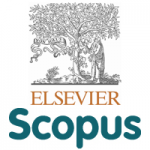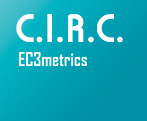Interpretaciones de los Padres de la Iglesia greco-oriental sobre la Domus Sapientiae y su influencia en el tipo iconográfico de la Anunciación del siglo XV / Greek-Eastern Church Father's Interpretations of Domus Sapientiae and their Influence on the Iconographic Type of the Annunciation in the 15th Century
Resumen
ABSTRACT: This article1 seeks to interpret the representation of Mary’s house shaped like a palace in some images of the Annunciation from an iconographic point of view, in the light of Greek Patrology, I start by analyzing some texts used by many Greek-Eastern Fathers to interpret several expressions such as domus Sapientiae, palatium Regis, aula regia, domicilium Trinitatis, and other similar terms alluding to some sumptuous dwelling reserved for God or the king. Taking these textual findings into account, I then analyze seven 15thcentury Annunciations in which Mary’s house in Nazareth is represented as a palace or a magnificent building. From the comparative analysis between these texts and these images, I conclude that the house of Mary depicted like a palace in pictures of the Annunciation symbolizes the supernatural incarnation of God the Son in Mary’s womb, as well as Mary’s virginal divine motherhood.
KEYWORDS
Domus Sapientiae; Christ’s Incarnation; Mary’s Divine Motherhood; Annunciation; Greek Patrology; Marian Iconography.
RESUMEN: Este artículo busca interpretar iconográficamente, a la luz de la Patrología Griega, la representación de la casa de María en forma de palacio en algunas imágenes de la Anunciación. Para ello partimos del análisis de textos mediante los cuales muchos Padres Greco-Orientales interpretan en sentido cristológico y mariológico expresiones como domus Sapientiae, palatium Regis, aula regia, domicilium Trinitatis, y otros términos similares alusivos a suntuosas moradas reservadas para Dios o para el rey. Teniendo en cuenta esos hallazgos textuales, analizamos luego siete Anunciaciones del siglo XV en los que la casa de María en Nazaret aparece representada como un palacio o un suntuoso edificio. Del análisis comparativo entre esos textos y esas imágenes, concluimos que la casa de María representada en forma de palacio en imágenes de la Anunciación simboliza la sobrenatural encarnación de Dios Hijo en el vientre de María, así como la virginal maternidad divina de María.
PALABRAS CLAVES
Domus Sapientiae; Encarnación de Dios Hijo; Maternidad divina de María; Anunciación; Patrología Griega; iconografía mariana.
Texto completo:
PDFEnlaces refback
- No hay ningún enlace refback.
URL: http://ojs.uv.es/index.php/IMAGO
Administración: C/ Universitat, 2 · 46003 Valencia.
M.Elvira.Mocholi@uv.es, Elena.Monzon@uv.es, mahiques@uv.es
ISSN digital: 2254-9633 / ISSN impresión: 2171-0147
MÉTRICA EN SJR BASADA EN SCOPUS
INDEXACIÓN






![]()







